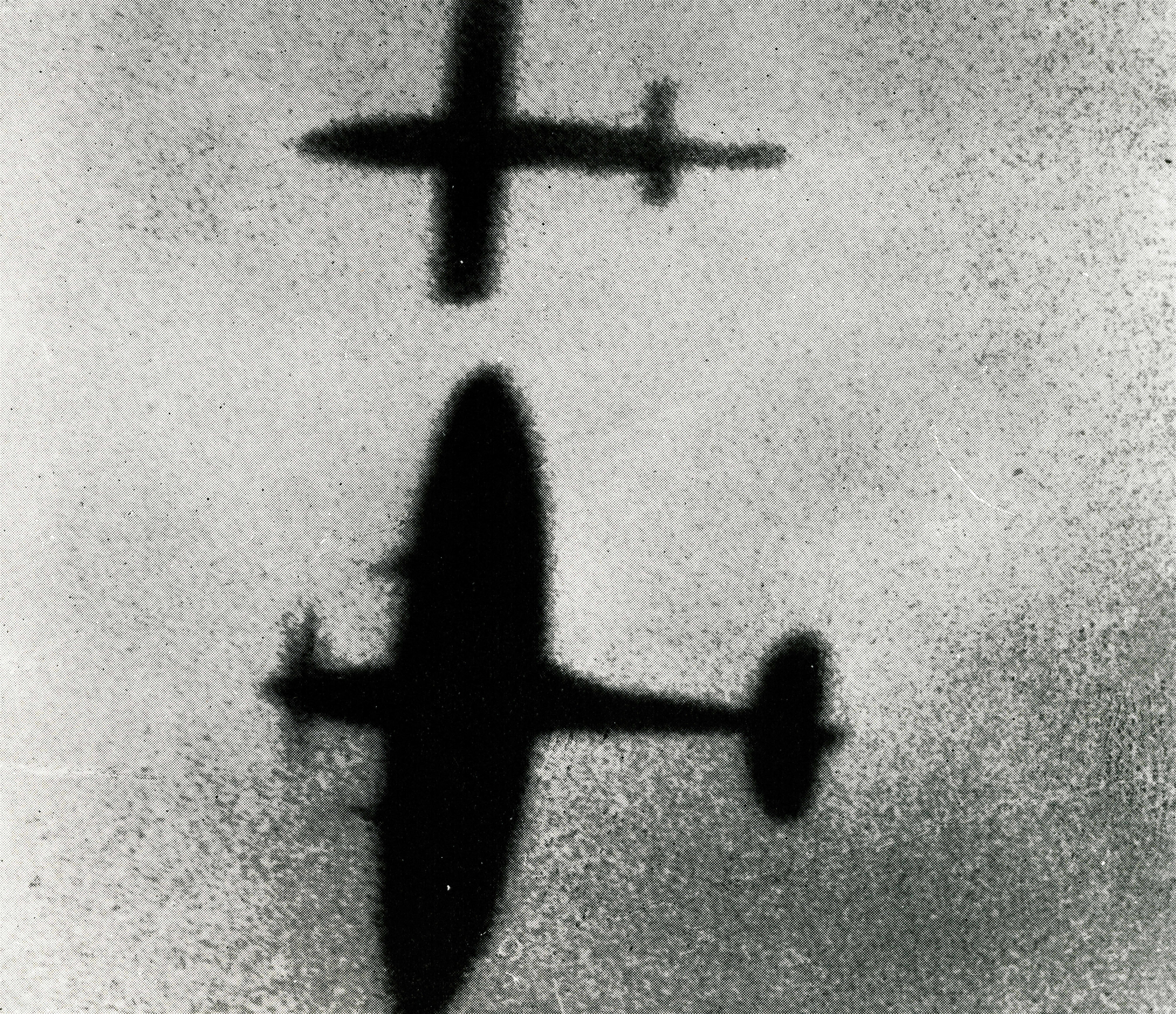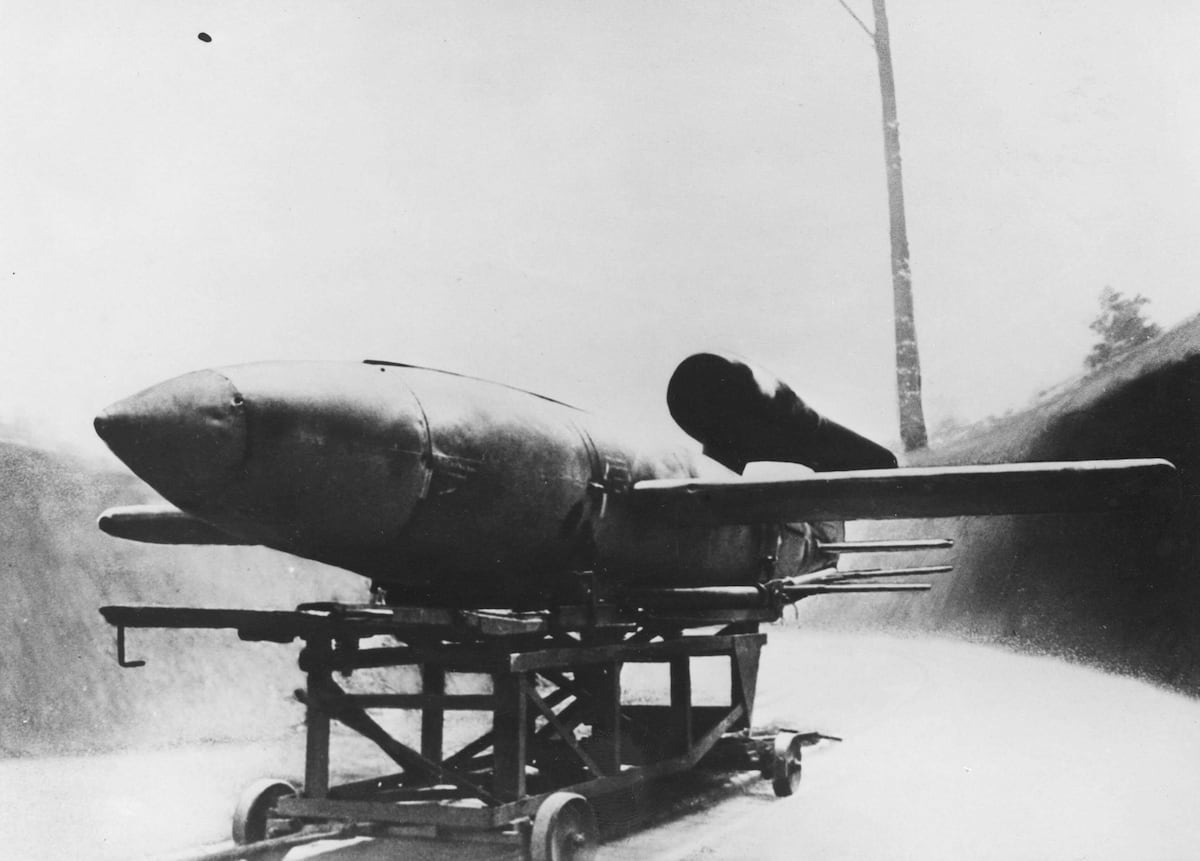On June 13, 1944, a strange new aircraft appeared in England’s skies.
While the Royal Air Force was accustomed to scrambling to intercept German fighter and bomber aircraft from mainland Europe, this new threat was different. It was unmanned.
Described by baffled onlookers as a “pilotless plane,” it had wings, a jet engine and a warhead that delivered far-reaching explosive damage on impact. Its engine cut out in midair shortly before it fell on targets. It was self-guided.
This was the Fieseler Fi 103, or Vergeltungswaffe 1, better known as the V-1 “flying bomb,” and it’s often called the first cruise missile. But the V-1 could more accurately be described in today’s nomenclature as an unmanned aerial vehicle (UAV) — moreover, as the first suicide drone.
Like UAVs today, the V-1 was cheap to manufacture and simple to assemble. Its affordability, as well as the damage and terror it could inflict, are why the Third Reich chose to invest in its production as the war dragged on.
Manpower shortages, a strained economy buckling under war costs and a general decline in morale among the civilian population were weakening Germany’s capacity to sustain its war effort. Adolf Hitler hoped the V-1 would prove to be a literal Wunderwaffe, or “miracle weapon,” that would turn the tables on the Allies and result in quick victory.
A weapon ahead of its time
An advanced autopilot control system, set before launch, was used to program its desired range, altitude and even the wind conditions to which it should adapt, according to Germany’s Deutsches Museum. The aircraft could adjust its own course in midair by dint of a built-in barometric altimeter, magnetic compass and rate gyroscope. A rangefinder, powered by its propeller, helped it reach its target.
The V-1 was equipped with a 1,800 pound warhead and traveled at a rate of up to 400 miles per hour. Nicknamed the “buzz bomb,” it was infamous for making a buzzing noise, which then went deathly silent before impact.
It took between 15 to 30 minutes to strike a target. One blast could level buildings and kill hundreds of people at once.
In addition to being autonomous, the V-1 had other similarities to UAVs today. Like several modern UAV variants, including the Kratos XQ-58A Valkyrie, the V-1 could be launched using an angled ramp. As is often the case in modern drone warfare, it was deployed in swarms.
V-1s leave swaths of destruction
Hitler hoped the use of cheap but destructive unmanned aircraft would erode the enemy’s will to fight and keep Germany in the war indefinitely.
As production of last-ditch “miracle weapons” became central to the Nazi war effort, concentration camp inmates and POWs died en masse as they were forced to churn out V-1s. Those prisoners are now memorialized at the Mittelbau-Dora museum and memorial site.
It took about 280 hours total to assemble a single V-1 — only one week in normal working hours — but far less than that due to brutal, round-the-clock slave labor overseen by the Schutzstaffel, or SS, the Nazi Party’s paramilitary organization.
About 30,000 total V-1s were built within a relatively short time frame preceding the end of the war, according to the Peenemünde Historical Technical Museum. By the end of March 1945, more than 10,000 of them had been fired at London alone, and others targeted Rotterdam, Antwerp and Liege. The self-piloted “bombs” wreaked heavy casualties and left swaths of destruction.
Allies find successful counter measures
The V-1s were cost-effective, powerful and inflicted terrifying damage. However, they ultimately failed to net a “final victory” for Hitler for several important reasons.
Despite lacking similar technology, Allied efforts to counteract the V-1 drone swarms were successful. Surface-to-air strikes and air-to-air interceptions worked.
Of those counter measures, air-to-air interception was arguably most effective. The practice of “wing tipping,” pioneered by Australian Spitfire ace Ken Collier, saw fighter pilots intercept the drones and knock them off course. Additionally, barrage balloon obstacles with wires intercepted V-1s in midair.

Underpinning the Allied approach to anti-drone defense was engaging with the V-1s immediately and not waiting to discern their intended targets. It was understood that the V-1s would inevitably cause harm, so the only solution was to down them instantly.
Other factors that made Hitler’s “suicide drones” unsuccessful were relentless Allied bombing runs on V-1 production and launch sites and Germany’s dire strategic situation.
Perhaps the most important factor was that the gruesome strikes against civilians deepened the grim resolve of the Allied nations to resist the Third Reich’s war aims. This sentiment was eloquently expressed in a speech that British Prime Minister Winston Churchill gave on July 14, 1941, in the aftermath of previous Luftwaffe bombing onslaughts:
“We ask no favors of the enemy. We seek from them no compunction … You have committed every crime under the sun … We will have no truce or parley with you, or the grisly gang who work your wicked will. You do your worst and we will do our best.”
Marketed to the German people as an affordable, powerful unmanned solution to winning the war, the V-1 failed to achieve this aim — even despite being opposed by unsophisticated counter-UAV technology.
Zita Ballinger Fletcher previously served as editor of Military History Quarterly and Vietnam magazines and as the historian of the U.S. Drug Enforcement Administration. She holds an M.A. with distinction in military history.
Read the full article here








